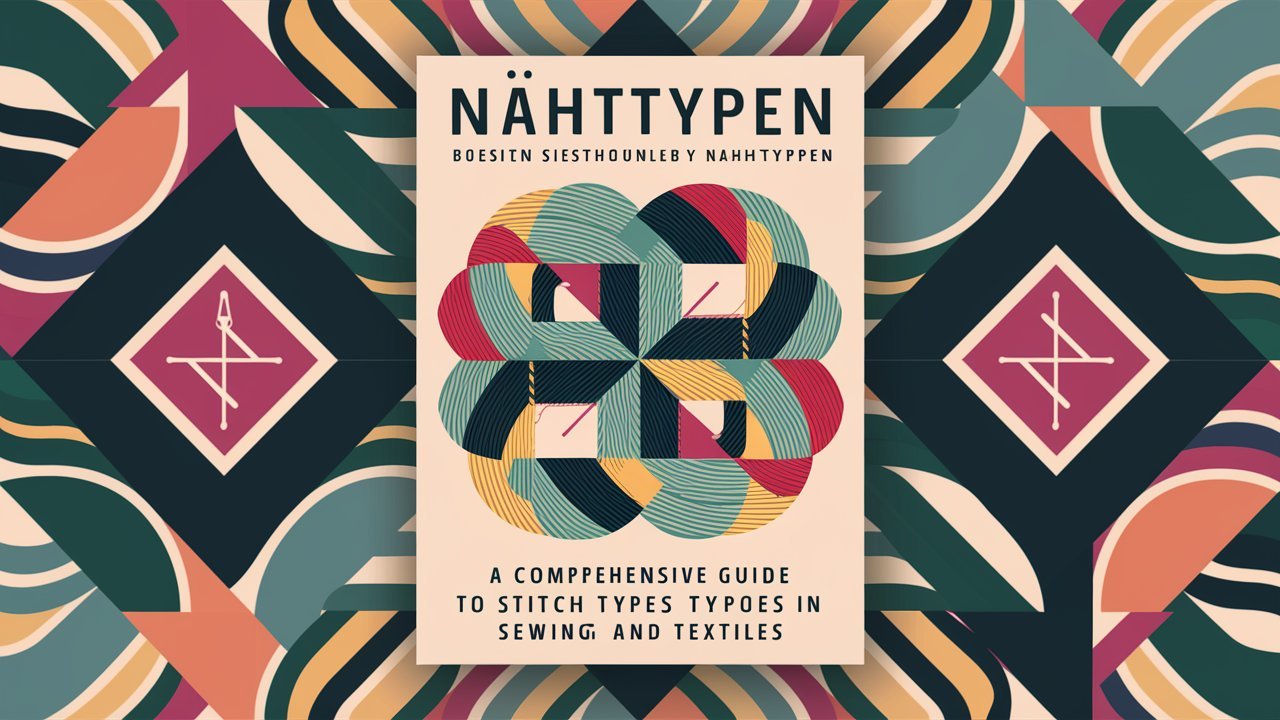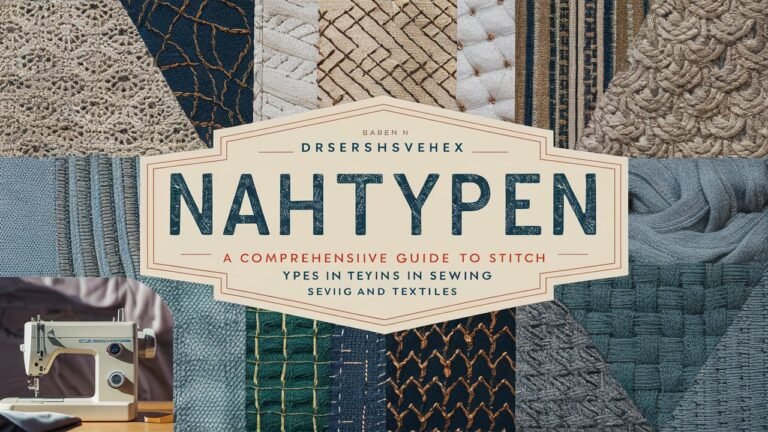In the world of textiles, tailoring, and fashion, nahttypen—translated as stitch types—play a critical role in determining the strength, durability, and aesthetic quality of garments. Every seam tells a story of precision, craftsmanship, and functionality. Understanding the different types of stitches not only allows designers and tailors to enhance garment construction but also ensures optimal comfort and long-lasting wear. In this article, we present a detailed exploration of nahttypen, their characteristics, applications, and benefits in modern clothing and industrial textiles.
What Are Nahttypen?
Nahttypen refers to the different categories of stitches used in sewing, tailoring, and garment manufacturing. Each stitch serves a specific function, from joining fabrics to providing decorative finishes. The choice of a stitch type depends on factors such as fabric thickness, seam strength requirements, elasticity, and design aesthetics. Properly chosen stitch types contribute to the garment’s durability, functionality, and appearance.
Common Types of Nahttypen
1. Plain Seam (Geradstichnaht)
The plain seam is the most basic and widely used type of seam. It involves joining two pieces of fabric with a straight stitch. Known as Geradstichnaht in German, it provides a neat and clean finish suitable for lightweight to medium-weight fabrics. This stitch is ideal for everyday clothing and simple tailoring projects.
2. Overlock Seam (Overlocknaht)
An overlock seam is often used in industrial garment production. It prevents fabric edges from fraying by looping threads around them. The overlock stitch also adds elasticity, making it perfect for knit fabrics, sportswear, and stretchable garments. It is both durable and aesthetically pleasing, often giving garments a professional finish.
3. French Seam (Französische Naht)
The French seam is valued for its elegance and clean interior finish. It encases raw edges within the seam, ensuring no threads are visible on the inside. This type is often used in delicate fabrics like silk, chiffon, and organza. The French seam is a favorite in luxury clothing, lingerie, and high-end tailoring.
4. Flat-Felled Seam (Kappnaht)
The flat-felled seam, or Kappnaht, is known for its strength and durability. It involves folding one edge of fabric over another and stitching it flat. Commonly used in jeans, workwear, and outdoor apparel, this seam is designed to withstand heavy wear and stress while maintaining a clean, professional appearance.

5. Zigzag Seam (Zickzacknaht)
The zigzag seam is highly versatile and flexible. It allows fabrics to stretch while preventing unraveling. Often used in knitwear, decorative stitching, and elastic fabrics, the zigzag stitch is also useful for reinforcing seams and finishing raw edges where an overlock machine is not available.
6. Blind Hem Seam (Blindstichnaht)
The blind hem seam is used when stitches should remain invisible on the outside of the fabric. It is commonly applied in trousers, skirts, and formal wear where neat finishing is essential. This stitch requires careful alignment but results in a highly professional look.
7. Topstitch Seam (Steppnaht)
The topstitch seam is not only functional but also decorative. It involves stitching visible lines on the outside of the garment to reinforce seams and enhance aesthetics. Found in denim, jackets, and bags, topstitching adds both durability and stylish detailing.
8. Double-Stitched Seam (Doppelte Naht)
The double-stitched seam strengthens garments by adding two parallel lines of stitching. This type is often used in areas exposed to high stress, such as pockets, shoulder seams, and activewear. It ensures both security and longevity of the garment.
Applications of Different Nahttypen
Fashion Industry
In fashion design, stitch types are essential for shaping garments, enhancing beauty, and ensuring comfort. Designers often choose stitches based on the fabric type, from delicate French seams for silk blouses to rugged flat-felled seams for jeans.
Industrial Textiles
Beyond fashion, nahttypen play a crucial role in industrial textiles such as uniforms, safety gear, and upholstery. Durable seams like the flat-felled seam or double-stitched seam ensure safety and resilience under extreme conditions.
Home Sewing and DIY Projects
For sewing enthusiasts, understanding stitch types opens up a world of creativity. Whether crafting decorative pillow covers, repairing garments, or creating custom outfits, choosing the right seam ensures professional-looking results at home.
Factors to Consider When Choosing Nahttypen
When selecting a seam type, several aspects must be taken into account:
-
Fabric Type: Lightweight fabrics require delicate seams, while heavy fabrics need strong, reinforced stitches.
-
Elasticity: Stretch fabrics demand seams like zigzag or overlock that can move with the fabric.
-
Durability: Workwear and outdoor apparel require strong seams like flat-felled or double-stitching.
-
Aesthetic Appeal: Decorative seams such as topstitching or blind hems enhance garment beauty.
-
Ease of Sewing: Some seams require advanced skills, while others are ideal for beginners.
Benefits of Mastering Nahttypen
Understanding and applying the correct nahttypen offers numerous advantages:
-
Professional Finish – Creates garments with clean and durable seams.
-
Enhanced Durability – Ensures clothing withstands wear and tear.
-
Design Versatility – Expands creative possibilities in tailoring and fashion.
-
Comfort – Provides smoother and more comfortable garments.
-
Aesthetic Quality – Enhances both the interior and exterior look of garments.
Conclusion
The world of nahttypen is vast, detailed, and essential to anyone working with fabrics. From simple plain seams to intricate French or blind hem seams, each type carries its own functionality, durability, and beauty. Mastery of these stitch types enables us to create garments that are not only strong and durable but also elegant and professionally finished. By applying the correct seam type, we ensure that clothing meets both practical and aesthetic standards, satisfying the highest expectations of wearers and designers alike.
FAQ on Nahttypen
Q1: What is the strongest seam type?
The flat-felled seam is considered one of the strongest seams, ideal for jeans, uniforms, and heavy-duty garments.
Q2: Which seam is best for delicate fabrics?
The French seam is perfect for delicate fabrics like silk and chiffon due to its neat enclosed edges.
Q3: What seam should I use for stretch fabrics?
Stretch fabrics require overlock or zigzag seams, which allow flexibility and prevent tearing.
Q4: Can decorative seams also be functional?
Yes, seams like topstitching provide both reinforcement and decorative appeal, especially in denim and jackets.
Q5: Do I need special machines for all nahttypen?
While some seams require specialized machines (e.g., overlock machines), many basic seams can be created with a standard sewing machine.
